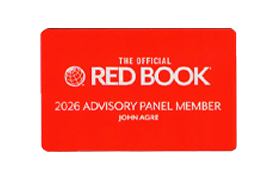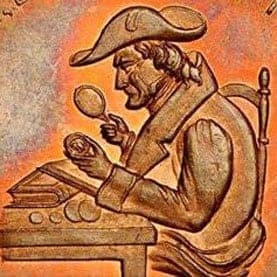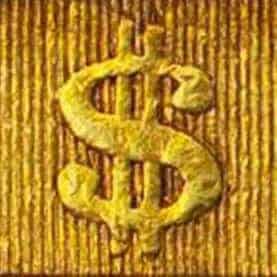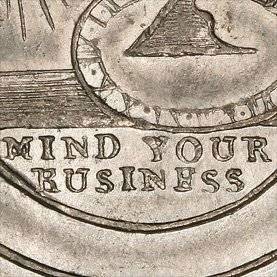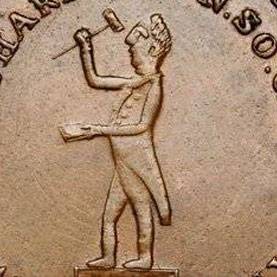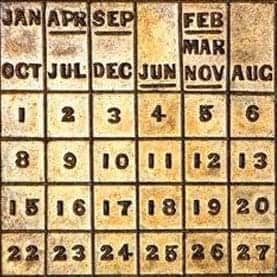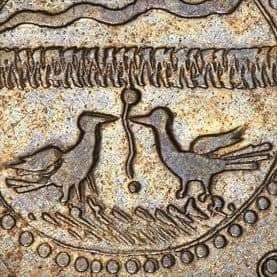March 2-7, 2010: The Whitman Baltimore Expo
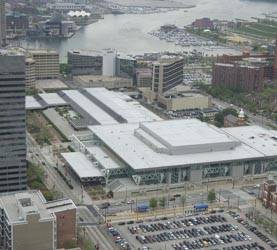
Day 1:
It was an interesting and very long Tuesday, as I woke up at 3 AM to finish packing and then catch the first flight from New England, arriving at my hotel in downtown Baltimore without so much as a hitch at about 8:00.
Which allowed plenty of time to relax, unpack, hit the gym, eat breakfast, answer email, make a few calls, and stroll leisurely-like into Stack’s relatively crowded lot viewing room at the Sheraton (and not the usual Pier 5 Hotel) at about 11.
Upon arrival, my first official act was to harmlessly pull out my chair (in much the same way that millions of chairs are pulled out in lot viewing rooms all over the the world every year) and in the process apparently yanked an extension cord out of a socket killing all of the viewing lights, and causing everyone in the room to yell at me (including one guy who insisted I climb under the table and try to plug it back in, which I did not).
Fortunately, this unfortunate situation was eventually resolved by the Stack’s staff, and I began some concentrated viewing of the extremely thick if awkwardly-named “Selections from the Estate of Louis E. Eliasberg, Jr. and the Collection of Chester L. Krause” catalog. And while of course my primary goal was to evaluate the pieces of potential interest to us, I spent part of my time checking out the other incredible things here, including some wonderful gold and the cool literature related to the Eliasberg collection:
Lot #454, Eliasberg’s own ‘Numismatist’s Reference’, a pocket sized book neatly bound in black leather with ‘L. Eliasberg’ in gold on the cover, containing some really interesting listing details and hand-written comments circa 1940 or so about what he owned, what he paid, what he needed and how much certain coins might cost if they became available. Really a fantastic and important historical record, as evidenced by the very robust $51,750 it brought to a phone bidder.
Lot #455, John Zug’s appraisal of the John Clapp collection with detail and descriptions of Clapp’s holdings totaling $92,000+, and which served as the basis for Eliasberg to acquire same for $100K in 1942. This was especially interesting for me, as there were original descriptions, grades, sources and then-current values for a number of coins that we have actually owned through the years. That brought $57,500.
Lot #456, an inventory of the Eliasberg collection circa 1951 contained more interesting information, including some provenance details about some of the coins that no one knew before, and brought the relative bargain price of just $37,375.
But then it was on to the coins. And while there are a lot of lower grade and not especially beautiful coins in this catalog, there is a lot of good stuff which made Dave’s ‘first cut’ when he viewed this material at Stack’s in NY last week. I made my own list, though, and then we compared notes when Dave arrived in the afternoon. And while we didn’t agree on everything, there was substantial overlap, resulting in a long list of coins for us to bid on late in Tuesday’s session, as well as in the colonial session on Wednesday.
Which required a great deal of researching, strategizing and planning that took most of the rest of the afternoon, concluding just in time for us to have a sensible dinner back at the hotel, after which your author fell asleep almost immediately and woke up 12 hours later to write this blog.
Which means that I am now thoroughly well-rested for Wednesday, ready to tackle the auction and prepared to take copious notes so that I can sprinkle in some interesting anecdotes and results into tomorrow’s RR, which will be posted here in almost exactly 24 hours.
Day 2:
The first order of business on Wednesday (after the blog writing noted in yesterday’s RR) was a long meeting with Dave, during which we finalized our Stack’s bids and entered most of them online, followed by a brisk walk to the Sheraton for the live auction at 11.
Which we arrived at just in time to get crummy seats way on the left side of a wide, shallow room about half full of colonial collectors and dealers all waiting to bid on a gigantic session of colonial coins, including some retreads from a variety of sources (which we figured would languish), a handful of wonderful and previously unknown Eliasberg pieces (which we knew would be strong), and 500+ raw colonials from the Peter Scherff Collection (which was something of a mystery).
You see, Mr. Scherff was a traditionalist colonial collector, active in the 1980’s and 90’s, and assembling sets of Massachusetts Silver, Higley Coppers, Connecticut Coppers, Vermont Coppers, New Jersey Coppers, New York issues, etc., all by die variety, all with condition not being a high priority. Which is to say that there were a lot of coins here from common to very rare, but many were well worn, not that attractive and had ‘issues’ of one kind or other.
Which had a lot of us were wondering (actually fearing) how these sorts of ‘collector grade’ pieces would do in the current market in which condition is seemingly more important then ever.
And the answer was provided early on and then repeated throughout – the relatively common coins in low grade or with problems brought extremely low prices (some perhaps at close to the same levels they brought back when Mr. Scherff was buying them 20 years ago), while anything attractive and pleasing for the grade was very robust, as perhaps best illustrated by a couple of similarly rare NJ coppers sold in rapid succession in the middle of the auction:
Lot #2159, a 1786 NJ Maris 20-N, considered to be Rarity-4, in dark and ugly VF, brought just $184.
Lot #2161, a 1786 NJ Maris 21-P, considered to be Rarity-5, in very pleasing VF with choice golden brown color brought $4,313.
That’s kind of a big difference. But while the common coins in low grade were very weak, the scarce and rare ones sold pretty strong no matter how rough they were:
Lots #2104, a Higley Copper in PCGS AG3 (and in our opinion the least attractive of the five Higleys in the offering) brought a robust $40,250, which is just more than 10 times the price this piece realized in the Norweb sale in 1987.
Lot #2116, a very rare Standish Barry Threepence in a PCGS F15 holder with some profound striking weakness, brought $37,375, which is just a bit more than 21 times as much as it sold for at auction in 1988.
Lot #2486, a corroded 1787 New York Excelsior Copper in a PCGS Genuine holder brought a strong $17,250, which is about 10 times the price this same coin realized in Stack’s Roper sale in 1983.
Which confirmed once again that ugly common coins aren’t very popular, while pretty coins and rare coins are always in demand. Such as was the case with the Eliasberg consignment, which saw widespread interest:
Lot #2077, the Virginia Penny in PCGS PF65 and one of the nicest of perhaps 20 known, brought $28,875 to CRO after a burst of spirited bidding in the room.
Lot #2533, a beautiful 1788 Massachusetts Half Cent in a PCGS MS64 holder brought $20,700, which is a super strong price for this issue in this grade range, but not surprising since that coin was absolutely stunning. We were the underbidder on that coin and disappointed not to win it.
Lot #2562, a 1796 Myddelton Token in Copper in a PCGS PF64 BN holder went way above our expectations at $31,050.
Indicating that cool stuff is as popular as ever, and that people really, really like that Eliasberg pedigree.
With that, the sale finished up for us at about 4 PM, at which time we headed over to Bowers lot viewing at the convention center, followed by dinner with some dealer and collector friends at Morton’s.
Where we found ourselves in the middle of a conversation in which another dealer told a story about some bizarre deal gone horribly wrong which began to sound eerily familiar and concluded with Dave and me realizing that we were initially asked to be part of said deal, but felt at the time that something was amiss and had declined and, in doing so, apparently dodged a massive bullet that we never knew about until last night.
Which is the sort of story you wish you had never heard, though I suppose it was nice to confirm that our judgment at the time was spot on.
And so, full, and now slightly unsettled, we walked back to the hotel, didn’t get much sleep and have precious little time to get ready for the start of the show on Thursday. Which means I really need to sign off now and start ironing that banner.
Until tomorrow –
Day 3:
By 7:30 we were out the door and en route to the Convention Center on what was an unexpectedly brisk Thursday morning, resulting in us arriving at the show frozen and windblown, but otherwise ready to tackle the day.
Which we did first by standing in the huge line at the entrance getting ticked off while waiting for them to open one tiny door which all of us would then squeeze through like numismatic cattle.
Which we certainly did, then raced quickly to our table and began setting up the booth like crazy.
Then it was off to find cool stuff to buy, which we did in relatively small quantities – a colonial here, a federal coin there, a giant medal, another colonial, etc.
Next we sold intact that Proof Seated Dime set we described on our homepage, which was absolutely wonderful from a commercial perspective, but utterly disappointing from a ‘showing-it-off’ perspective since I believe a total of 3 people saw it (i.e. the buyer, Dave and me).
We also managed to sell quite a few other items of the federal variety and several pieces of esoterica, including the aforementioned gigantic medal in one of those unbelievably oversized NGC holders which looks like a movie prop, but which is actually a real thing. We also received an order for the Virginia Penny we bought at Stack’s on Tuesday, and will be shipping it out tomorrow before we’ve gotten the chance to show it to anyone else or feature it in an unbelievably clever CRO ad.
The rest of the day was spent picking up our Stack’s lots, submitting some stuff for grading with trepidation (since early indications are that we are in for another rough ride in that department), schmoozing with other dealers, finding out what everyone else bought at Stack’s, eating an orange and then, in a late flurry of activity, preparing our bids for the evening Bowers’ session.
Which had a number of interesting colonials for us, most (but not all) of which we bought a bunch of things for what seemed to us like really good prices. What we did not buy were any of the Fugios, though we made a valiant effort to buy one of them only to be trumped by a guy who certainly earned the win.
And then, while everyone else filed out for a fancy dinner, your author went back to the hotel to workout, do some paperwork and write this blog (which I am just about to complete right now).
Tomorrow should be even more fun, as we expect to a lot of customers and friends to come to the table, hang out with some of the PCGS chatroom crowd, find some more cool things to buy, and, we hope, possibly sell a coin or two during the course of the day.
Day 4:
The show opened for us at 9 on Friday (as opposed to 8 on Thursday), which meant that we had a far less hectic morning and arrived at the show relaxed and ready for the anticipated onslaught (in a good way) of a lot of our customer friends and regular Baltimore attendees.
Which began precisely at 10 when the show opened to the public, continued pretty much all day, and involved some fun conversation, numismatic show and tell, active buying and selling and at least one impromptu photo session in front of the CRO banner / photo backdrop. Also, a lot of the people seemed to be wearing CRO hats, including your author, though he had to since his hair was utterly out of control, having never fully recovered from the windy walk to the convention center on Thursday. But I digress.
Anyway, one of the most interesting parts of the day was the aforementioned show and tell, which on this day featured, among other things, some extremely dirty gold owned by several different customers, a lot of it really cool, most of it in older holders and all of it exactly the sort of stuff that people go berserk over at auctions (and rightly so).
Then it was time to pick up our Bowers’ winnings, a good-sized haul of colonial through federal coins, several of which we sold, not that surprisingly, within a few hours on the floor.
Followed by the return of a bunch of our PCGS submissions, which at least in this case all graded pretty much as we expected (phew!), allowing us to go ahead and market them straight away here at the show and/or in our next EB on Tuesday.
Which in total made for a quite successful day commercially and socially, ending with an excellent dinner with some dealer friends at Roy’s, our first foray back there after an extremely unfortunate and well documented sushi incident at the ANA last year. No problems this time though.
Saturday we’re anticipating another good day, though it would be nice to find a few more cool things for inventory before we leave town. So if you have anything you think we’d like, please offer it to us at Table #304.
Day 5:
Saturday began as they usually do at these shows, with us packing up and checking out of our hotel, then schlepping heavy bags across town to the convention center in what could probably best be characterized as an inconvenient pain in the neck.
But once we got there, it all seemed worthwhile, as it was another active day, and we got to see more old friends, meet a number of collectors we had heretofore known only by their PCGS chatroom monikers and comments therein, and others who came to our table to meet us for the first time because they read the Road Report. And that’s always fun, even when, like yesterday, a guy walked up and asked Dave and me “Which of you writes the Road Report?” When I said it was me, he said “I expected you to be in better shape based on all those comments about going to the the gym.” So that was nice. And I guess I might have been offended if it wasn’t true.
On the commercial side things were really pretty good for a weekend, especially since our plea for cool coins at the end of yesterday’s RR seemed to have been heeded. Allowing us to buy a bunch of nice federal coins with the original, naturally toned look that we seek, and, to my surprise, some nice colonial additions of the deluxe high-end, pop top, but not-too-expensive variety. In other words, exactly the sort of stuff we always endeavor to find and like to put on the site.
Interestingly, our last purchases concluded at the unusually late hour of 5 PM after we had already packed up and shipped most everything out. That transaction also required us to go track down the seller, who at that time had left his coins with us the table and was wandering around on the other side of the room, but that was not a problem, since CRO is always prepared to travel to buy coins.
Sales were active too, mostly at moderate price points that are, in our now extensive and well documented experience, typical for a weekend at a coin show. And they ran almost as late as our purchases, with the last sale coming at about 4:30 (unusual, since most of the serious buyers were long gone by then). That wasn’t the latest sale I witnessed though – that one was at 8 PM(!) when one of the dealers who happened to be on my flight home sold a Buffalo Nickel for $25 to another dealer while we waited in the airport gate. Seriously.
But now we’re back home, facing a mountain of enjoyable paperwork, a bunch of follow-up shipping to customers who ordered items while we were at the show, lots of coins to send to our photographer, or out for grading (including a number of things that we got in too late to submit at the show), and, importantly, the project of our next EB, which will take a while to complete, will be chock full of great stuff, and will be sent out this coming Tuesday at noon EST.
So you might want to keep an eye out for that.

